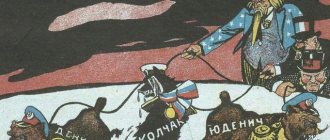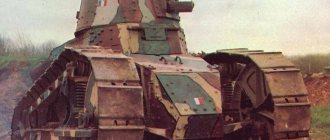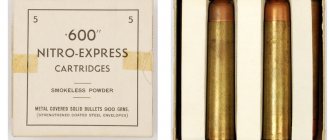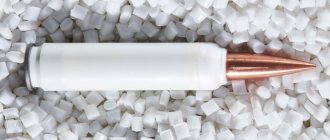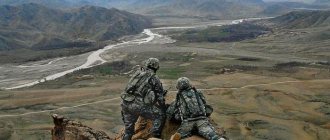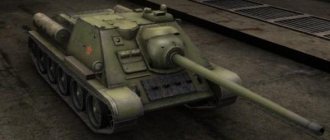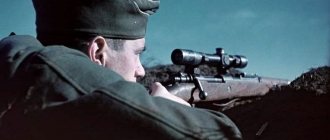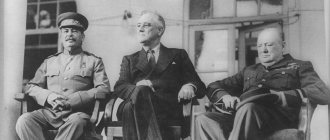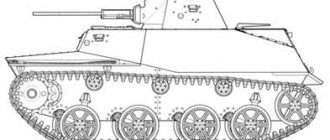Need will force
There were a lot of weapons in the Russian Empire in 1917.
And among ordinary citizens, and among deserters, and in the warehouses of all kinds of newly-minted armies. There remained a “small” problem - these weapons were distributed, let’s say, unevenly. Some people had a lot of it, while others had quite the opposite. As it was said in the first novel about Chapaev: “And look at the convoy: two hundred carts, two hundred men, and for two hundred of them all... eleven rifles! There are eleven rifles, but very little ammunition.” Furmanov was Chapaev’s commissar, so he knew what he was writing about.
The Civil War units themselves made pikes, checkers, primitive pistols, revolvers, sawn-off shotguns... And not only that.
Melee weapons seemed hopelessly out of fashion by the beginning of the First World War. However, checkers were quite suitable for cutting down a fleeing enemy. Or during the execution of prisoners, as well as all kinds of hammers and axes (from the memoirs of Sergei Mamontov):
“I started to feel sick, and I hurried away. All this happened without any malice, just as a demonstration of a good blow. “What is this,” said the elderly man. “It takes force to cut a person from the shoulder to the waist.” He wiped the saber on the commissar's uniform. Human life was valued inexpensively.”
Where can you get cartridges when the cartridge factory is in Tula or Lugansk, and your squad is, say, in Siberia? Can be taken from the enemy. Or you can do it yourself.
Let's open other books, also written by participants in the events:
“The long-legged battalion commander dropped the Colt, bent over, fell face first into the grass and screamed. A whole load of rusty nails and crushed cast iron hit him in the stomach.”
This is Zazubrin, “Two Worlds” - the first Soviet novel about the Civil War, precisely in Siberia.
And here is the famous “Quiet Don”: “Lead reserves were melted in the Veshensk workshop, but cast bullets, devoid of a nickel casing, also melted... After the shot, the homemade bullet flew out of the barrel as a melted lump of lead, flew with a wild howl and purr, but struck only one hundred, one hundred and twenty fathoms. But the wounds inflicted by such bullets were terrible.”
Anton Zheleznyak Technical and engineering expert
In fact, a lead bullet does not melt in the barrel - it simply does not have enough time for this. But when it hits a target, it flattens greatly, which gave rise to the belief described above.
In Eastern Siberia, for obvious reasons the furthest from weapons reserves, partisans even got the hang of making tin-cased bullets for rifles. We take tinplate (thin steel coated with a protective compound, most often tin), lubricate it with soldering acid, and pour lead inside. For large-caliber Berdan bullets, they used Babbitt, a lead or tin-based alloy.
Partisans of the Tomsk province, 1919 - three-line rifle, Berdanka and percussion rifle (photo source)
There, in Siberia, they also established the production of black gunpowder from birch coal, saltpeter and sulfur - mix, grind, press through a sieve, and dry. Saltpeter was sometimes mined directly from local deposits - washed in warm water and then evaporated.
In Turkestan they even tried to make bullets from antimony - but such ersatz often got stuck in the barrels.
In Mongolia, engineer Lisovsky, assistant to the legendary Baron Ungern, proposed casting bullets from... glass. And such bullets worked against the Chinese army. As a result, Ungern drove the Chinese out of Mongolia.
But what if you want something more powerful than rifles?
“Invent something to make these stupid European snobs kill each other faster.”
These were the words of advice given to Hiram Maxim by an American friend who visited him in Europe.
“Give up your electricity!” he added. So, in 1881, the inventor finally took his drawings seriously in order to turn a friend’s wish and his own dreams into the world’s first real machine gun. Already in 1883, a British patent was received, and the first machine gun saw the light of day - a formidable and impartial fighter who participated in all subsequent wars and took millions of lives.
The machines were also varied, like this one from the Boer War
Source: pinterest.ru
The new weapon made a double impression on the public and military. Opinions were divided: some considered it a pointless machine for wasting ammunition, while others saw in it a revolution in military affairs. As usual, the latter turned out to be right. Supporters of the machine gun included banker Nathaniel Rothschild, who financed the work, Russian Emperor Alexander III, Kaiser Wilhelm II and many other prominent people of the time. In 1893, when British troops used the first machine guns during the suppression of the uprising in South Africa, our hero’s military journey began.
German Maxim – MG-08
Source: pinterest.ru
Some designers tried to compete with Maxim, including the eminent John Browning, but the Maxim system machine gun was still the pinnacle of automatic firing technology at that time, its superiority was added by reliability (one of the samples fired continuously 15 thousand shots without misfires) and simplicity of design.
British Vickers
Source: pinterest.ru
The machine gun consisted of several elements: a barrel with a cylindrical casing for pouring water and cooling it, a body where the main belt feed mechanisms and automation based on the short recoil stroke of the barrel were located, a machine (tripod, sled or wheeled - there were many options) and a shield.
Swiss MG-11
Source: pinterest.ru
At the end of the 19th century and in the first decade of the 20th, the famous “division” of the machine gun took place, so to speak, along national lines. The USA (Browning), Great Britain (Vickers) and Germany (DWM) bought their licenses. Each country adapted a single model to suit its needs and vision of using new weapons, as well as its rifle calibers. In 1905, Maxim reached Russia; its production under license began at the Tula Arms Plant.
Hand and wooden artillery
The easiest way is to imitate machine guns and even cannons. Wooden “ratchets” have become very popular in Siberia and the Don. The noise they made was very reminiscent of machine gun fire. As a rule, there were no people willing to come closer and check what was knocking there.
Ratchet - partisan “machine gun” (photo source)
To externally imitate cannons, they used everything that could look like them from a distance - pipes, logs. The gun with a barrel at the muzzle “hooked”, almost like a real cannon.
In Perm in the fall of 1918, the production of homemade “Communist” and “Bolshevik” grenades was launched. In Yakutia, the whites attached ramrods to serial hand grenades and fired them from berdanks - almost like from “real” grenade launchers of the First World War type. True, the grenades did not fly far.
Siberian partisans took cast iron pipes, covered them with iron rings in the forge - and received a cannon barrel. They could add birch paneling.
If there was absolutely nothing at hand, they cut down the larch and burned out its core - also a cannon.
Then they loaded such cannons with scraps of metal and nails, pointed them towards the enemy - and banged away. The deadly pieces of iron flew hundreds of steps. Imagine the enemy’s surprise when the roar of cannons is heard in the middle of the taiga!
Partisan gun (photo source)
It can be even simpler - we take (if available) a Japanese shell, sharpen it, and load the result into a Russian cannon. You can shoot. True, getting there is already a problem. And with a break, too. It may explode right in the barrel, or it may not explode at all.
In the air we also had to improvise. Airplanes flew on anything that burned - gasoline, ether, castor oil, alcohol... The pilots dropped perforated gasoline cans and tin cans instead of bombs - their howl as they fell terrified their opponents.
System
The automatic machine gun operates on the principle of removing powder gases. The machine gun consists of the following main parts and mechanisms: a barrel with a radiator and casing, a receiver with a cover and a feed mechanism, a butt plate with a butt, a fire control handle with a trigger mechanism, a bolt, a bolt frame, a recoil spring in its box, a magazine and a bipod . The “calling card” of the system is the casing, the edges extending far beyond the muzzle and forming a kind of ejector there with its profile - when fired, a wave of powder gases passing through it, with its inertia, created a vacuum in the rear part of the casing and, as a result, pulling portions of cold air under casing along the longitudinally finned barrel. Taking into account the fact that the British aviation Lewis, transferred from warehouses during the Battle of Britain for ground use and not having this casing, did not experience obvious problems with overheating, it should be recognized as not particularly necessary. The principle of ejector suction for active air cooling, except for Lewis , used in the design of the modern Russian machine gun "Pecheneg".
The barrel bore is locked by turning the bolt, the lugs of which fit into the transverse grooves of the receiver. The rotation of the bolt when locking is carried out by a curved groove on the bolt and the base of the bolt frame post. The striker-type impact mechanism is mounted on the bolt frame rack. The trigger mechanism allows only automatic fire. Shooting only from an “open bolt”, which negatively affects the accuracy of the fire. When firing, the machine gun is fed with cartridges from an original disk magazine with a multi-layer (2 or 4 rows, capacity 47 and 97 rounds, respectively) arrangement, which is driven into rotation by a feed mechanism. The magazine does not contain a feed spring, which fundamentally distinguishes it from all modern systems of this type. The feed mechanism is a lever type, driven by the protrusion of the bolt tail, which fits into the curved groove of the feed lever. The rate of fire (the rate of operation of the automation) is regulated by a tap on the gas chamber. The same tap compensates for lubricant thickening at low temperatures. The recoil spring is not a twisted cylindrical spring, as in modern systems, but a plate “gramophone” located inside a gear drum - the mating part of the bolt frame is made in the form of a gear rack. The spring can be tightened to compensate for shrinkage during operation, for which there is a key in the machine gun accessory. The accessory is a leather bag containing tools for minor repairs and eliminating weapon jams. There are also spare recoil springs and firing pins, as well as tools for assembling and disassembling weapons. The machine gun is considered to be hand-held, however, a machine is known for converting it into an easel one.
Chemical engineering in enemy armies
In 1919, there were still debates at the top of the Red Army about the advisability of using the accumulated chemical arsenal. This was recognized as quite possible in the current military situation. The required number of chemical shells for the army was estimated at 40 thousand pieces per month. It was also supposed to have a permanent reserve of 20 thousand poods. The issue of equipping the army with chemical weapons was first raised in the spring of 1920, in connection with the news of the impending offensive of the Polish army and their plans to use asphyxiating gases. The Main Artillery Directorate did not pay much attention to the problem, and the Red Army was unable to prepare properly for the Polish attack.
Little is known about the attitude of the White Army leadership towards chemical weapons. There is a mention by Ataman Krasnov of a chemical plant as part of his army. Nevertheless, there were chemical weapons on the Southern Front. British Army artillery officer H. Williamson proposed using it in the defense of Tsaritsyn to stop the Red advance. Wrangel approved of this idea. Chemical weapons were not used because they could not be delivered in time. In general, the command of the southern front did not show much interest in using these weapons. Its use was sporadic.
Chemical engineering in the Siberian army under the command of Kolchak was developed at a deeper level. A Military Chemical Commission was organized, whose responsibilities included the development and testing of chemical agents. In addition to it, Kolchak’s army had a Flamethrower-Chemical Battalion, but its role is not known. The battalion was not involved in military operations, and most of the time it was in the rear.
Content
- 1 Personal weapons 1.1 Melee weapons
- 1.2 Additional weapons
- 1.3 Rifles and muskets
- 1.4 Grenades
- 1.5 Landmines
- 5.1 Animals
Equipment [edit]
This equipment was carried by the troops in case of emergencies.
- Bandages (used to dress wounds)
- Hammer
- Hatchet (used for chopping wood)
- Knife
- Matches (used to start a fire)
- Nails
- Paddle (used for emergency river crossings)
- Camera (one of the first uses in war)
- Pickaxe (used for digging trenches)
- Ramrod
- Razor
- Rope
- Saw
- Spotlight [10] (Used for detection and illumination)
- Shovel (used for digging trenches)
- Wire
Transport[edit]
Animals[edit]
- Horse
- Camel
Cars[edit]
- Horse-drawn carriages
- Steam cars
Trains[edit]
- BLW Armed Train
Ships[edit]
- Allied States Navy ships
- Ships of the Confederate States Navy
Submarines [edit]
- USS Alligator
- CSS Hunley
- CSS Pioneer
- CSS Pioneer II (also known as CSS American diver
) - CSS Bayou Saint John
Airplane[edit]
Balloons[edit]
- Union Army Balloon
- Confederate Army Air Corps
Airships[edit]
- Andrews Aereon airship
Links[edit]
- "Archival copy". Archived from the original on July 14, 2013. Retrieved June 15, 2022 .CS1 maint: archived copy as title (link) CS1 maint: bot: original URL status unknown (link)
- "Technology in Civil War". Hackman-adams.com. Archived from the original on 2012-12-19. Retrieved October 15, 2012.
- "Introduction to Arkansas". Retrieved June 19, 2007.
- "Georgia Governor Joseph Brown Turns to Mechanics". Retrieved April 20, 2014.
- "NRA Museums". www.nramuseum.org
. - ^ ab Ricketts, H, Firearms
(London, 1964) - "Dixie Gun Works Spiller and Burr .36 Caliber Revolver". Guns of the Old West
. No . Summer 2014. May 16, 2014. Retrieved August 22, 2022. - Fremantle, Col-Lt Sir Arthur James (1864). Three Months in the Southern States: April-June 1863. Mobile, AL: S. Goetzel. pp. 36, 39.
- ↑
Battle of 1st Bull Run, retrieved May 3, 2007. - ^ abcdef history, "8 Unusual Civil War Weapons". sfn error: no target: CITEREFhistory (help)
- ↑
Rapid-fire guns of the Civil War. Archived March 24, 2008, at the Wayback Machine. - ↑
William B. Edwards, "Weapons of the Civil War", Thomas Pubs (October 1997) - Chinn, "Machine Gun: Part II Light Machine Guns". sfn error: no target: CITEREFChinn (help)
